MaryAnn Bernal's Blog, page 185
April 2, 2015
Book Launch - Scribbler Tales Volume Four now available in print and electronic formats
 When the daughter of a wealthy entrepreneur is kidnapped, Agent Richards races against time to find her in Abducted. In Cunning, newlywed Charlotte von Lichtner is obsessed with Transylvanian folklore when she encounters her husband's mysterious kinsman. Enamored finds Lady Margaret besotted with a younger man whose intentions are suspect in their unorthodox relationship. Will the murderer succeed as he flees the crime scene in Reckless? Doctor/patient confidentiality is sorely tested when Sarah reveals the truth about her lover's death in Safeguard.
When the daughter of a wealthy entrepreneur is kidnapped, Agent Richards races against time to find her in Abducted. In Cunning, newlywed Charlotte von Lichtner is obsessed with Transylvanian folklore when she encounters her husband's mysterious kinsman. Enamored finds Lady Margaret besotted with a younger man whose intentions are suspect in their unorthodox relationship. Will the murderer succeed as he flees the crime scene in Reckless? Doctor/patient confidentiality is sorely tested when Sarah reveals the truth about her lover's death in Safeguard.Amazon US
Amazon UK
Published on April 02, 2015 06:56
Kings and Queens in profile: Anne Boleyn
 History Extra
History ExtraAs part of our new Kings and Queens series , historian Elizabeth Norton tells you everything you need to know about Anne Boleyn, queen of England from 1533 to 1536 as the second wife of Henry VIII
Born: around 1501, in Norfolk
Died: 19 May 1536, at Tower Green (executed)
Ruled: 1533–36
Family: born to Sir Thomas Boleyn and his wife, Elizabeth Howard, daughter of the Duke of Norfolk. The second of three surviving children
Successor: Jane Seymour, Henry VIII’s next wife
Remembered for: being arrested for adultery and incest, taken to the Tower of London, and later executed
Life: Anne Boleyn was educated in Brussels and Paris, before returning to England in 1522 to serve Henry VIII’s first wife, Catherine of Aragon.
She caused a stir at court, captivating both the heir to the earldom of Northumberland and the poet Sir Thomas Wyatt, who called her ‘Fair Brunet’. By 1526 the king was also interested in the dark-haired young woman.
Anne had no intention of becoming the king’s mistress. Undeterred, Henry VIII bombarded her with letters, professing himself “stricken with the dart of love”. In May 1527 he began his long attempt to secure a papal annulment of his marriage to Catherine.
Anne was soon queen in all but name. She was now a political figure, instrumental in the fall of Cardinal Wolsey in 1529. On 1 September 1532 she was created Lady Marquis of Pembroke, giving her sufficient status to accompany Henry on a visit to France the following month.
She fell pregnant shortly afterwards, with the couple marrying in secret on 25 January 1533. But although finally married, Henry still needed to disentangle himself from Catherine of Aragon.
Anne, understandably, was anti-papal. She brought Simon Fish’s anti-clerical The Supplication of Beggars to Henry’s attention. He put increasing pressure on the clergy, forcing them to accept him as ‘Supreme Head of the Church of England’ in 1531.
In early 1533 Thomas Cranmer, a Boleyn family chaplain and the new Archbishop of Canterbury, repudiated his allegiance to the pope, before annulling Henry’s first marriage and crowning Anne.
On 7 September 1533 Anne gave birth to a daughter, Elizabeth.
Within months of their wedding Henry was unfaithful, informing Anne that “she must shut her eyes, and endure as well as more worthy persons, and that she ought to know that it was in his power to humble her again in a moment more than he had exalted her”.
When Anne miscarried a son shortly after Catherine of Aragon’s death in January 1536, he declared ominously that “he would have no more boys by her”. He had already fallen in love with Jane Seymour, and was soon looking to end his marriage.
On 30 April 1536, under torture, a musician named Mark Smeaton confessed to a sexual relationship with Anne. Two days later the queen was arrested for adultery and incest, and taken to the Tower of London.
Anne, her brother, Smeaton and three other men were convicted on trumped-up charges, with the men executed on 17 May. That same day, the royal marriage was annulled.
On 19 May 1536, Anne Boleyn walked to a scaffold on Tower Green. After making a short speech, she knelt as a French swordsman – sent for as a small act of mercy by the king – stepped up behind her and severed her head with one blow.
The death of Anne Boleyn shocked her contemporaries. As well as her involvement in religious reform, her greatest legacy is her daughter, Elizabeth I, who became one of England’s greatest monarchs.
Published on April 02, 2015 06:50
History Trivia - The Brevairum drafted
April 2
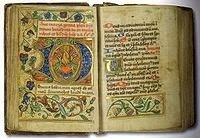
506 The Brevairum, a code of laws for the subjects of Alaric II, King of the Goths, was drafted at Toulouse.
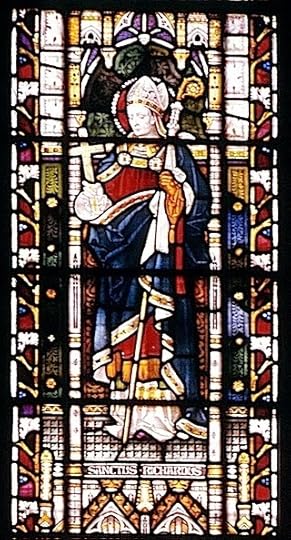
1234 Edmund Rich became Archbishop of Canterbury. Raised to the Archbishopric by Pope Gregory IX, Edmund was an outspoken figure who clashed with King Henry III of England and preached for the Sixth Crusade.
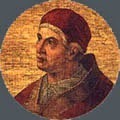
1285 Honorius IV elected pope. Honorius was old and crippled when elected but in his brief two years as pope he worked toward reuniting the Western and Eastern churches and supported the mendicant orders.

506 The Brevairum, a code of laws for the subjects of Alaric II, King of the Goths, was drafted at Toulouse.

1234 Edmund Rich became Archbishop of Canterbury. Raised to the Archbishopric by Pope Gregory IX, Edmund was an outspoken figure who clashed with King Henry III of England and preached for the Sixth Crusade.

1285 Honorius IV elected pope. Honorius was old and crippled when elected but in his brief two years as pope he worked toward reuniting the Western and Eastern churches and supported the mendicant orders.
Published on April 02, 2015 01:30
April 1, 2015
Remains of more than 1,000 discovered in excavation of medieval cemetery at University of Cambridge
 This photo shows some of the skeletons unearthed during the excavation of a medieval cemetery at St. John's College, University of Cambridge in England. (St. John's College, University of Cambridge/Press Association)Fox News
This photo shows some of the skeletons unearthed during the excavation of a medieval cemetery at St. John's College, University of Cambridge in England. (St. John's College, University of Cambridge/Press Association)Fox NewsArchaeologists undertaking excavations at the University of Cambridge in England say they've discovered one of the largest medieval hospital cemeteries in the U.K., containing the remains of around 1,300 people, including approximately 400 complete skeletons.
The Press Association reported that the existence and location of the cemetery have been known to scientists since at least the mid-20th century. However, the size of the burial ground and number of remains there was not clear.
The cemetery was unearthed in 2012 during the refurbishment of the Old Divinity School at the university's St. John's College, but its contents are only just being made public.
Scientists say the bodies mostly date from between the 13th and 15th centuries. They would have been taken from the Hospital of St. John the Evangelist, which stood across from the graveyard until 1511. The college, which takes its name from the hospital, was founded that same year by Lady Margaret Beaufort, mother of King Henry VII.
The bodies were buried without coffins or even burial shrouds, suggesting that most of the dead were poor. Most of the bodies were male, hinting at the hospital and cemetery's stated purpose, which was to treat "poor scholars and other wretched persons."
The Press Association reported that the bodies did not exhibit many serious illnesses and conditions that would have required medical attention. A report by The Archaeological Journal on the find said “this could reflect that the main role of the hospital was spiritual and physical care of the poor and infirm rather than medical treatment of the sick and injured”.
The University of Cambridge was founded in 1209, making it the second-oldest university in the English-speaking world, after the University of Oxford.
Published on April 01, 2015 08:44
History Trivia - William Harvey of England discovers blood circulation.
April 1

1204 Eleanor of Aquitaine died.
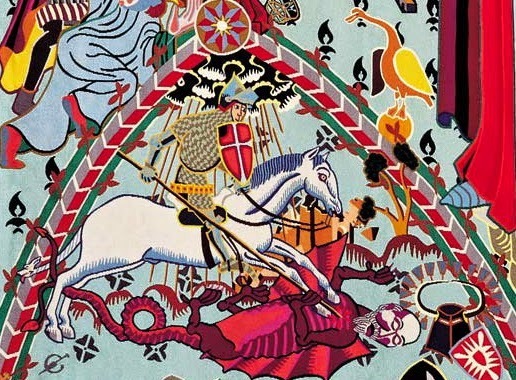
1340 Niels Ebbesen killed Gerhard III of Holstein in his bedroom, ending the 1332-1340 interregnum (period of discontinuity) in Denmark.
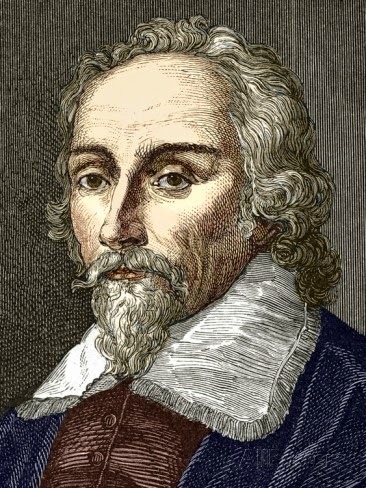
1578 William Harvey of England discovered blood circulation.

1204 Eleanor of Aquitaine died.

1340 Niels Ebbesen killed Gerhard III of Holstein in his bedroom, ending the 1332-1340 interregnum (period of discontinuity) in Denmark.

1578 William Harvey of England discovered blood circulation.
Published on April 01, 2015 02:00
March 31, 2015
8 things you (probably) didn’t know about Magna Carta
 King John signs Magna Carta. © GL Archive / Alamy
King John signs Magna Carta. © GL Archive / Alamy History Extra
Magna Carta, which this year celebrates its 800th anniversary, is perhaps the best-known document in world history. Yet much of it is either misunderstood or clouded in myth. Here, Nicholas Vincent, a professor of medieval history at the University of East Anglia, reveals some lesser-known facts about the iconic document…
Whenever and wherever it is exhibited, thousands queue to view what Lord Denning described as “the foundation of the freedom of the individual against the arbitrary authority of the despot”. King John, the monarch who put his seal to Magna Carta, is widely regarded as the worst king in English history precisely because it was his particular acts of tyranny that led his barons to demand the charter. But did you know…
1) Magna Carta never once refers to the concept of democracyIts principal beneficiary, named at the beginning of its opening clause, is not the freemen of England or the barons and knights, but ‘God’. The charter was granted first and foremost to God in order that the king could not, as he might have done with a charter granted to any of his subjects, simply repeal the charter by his own arbitrary will. Gifts once made to God could not lightly be rescinded.
2) In later centuries, it was argued that Magna Carta lay at the roots of such principles of English justice as Habeas Corpus and the jury system, but Habeas Corpus is a 15th-century invention, devised 200 years after Magna Carta…… and only incorporated into Act of Parliament in the 17th century. The jury goes unmentioned in Magna Carta, which speaks merely of trial ‘by peers, and by the law of the land’. In any case, as established in the 12th and 13th centuries, juries were not supposed to decide guilt or innocence, but instead to report (‘to present’) crimes in court, with judgment delivered by the king's justices.
3) Far from establishing equal justice for all, Magna Carta draws clear distinctions between classes, nationalities and peoplesThe charter distinguished freemen (a minority of the population) from the peasant majority. Knights are distinguished from barons, and barons from the even higher ranks of the earls.
Individual clauses of the charter distinguish between the laws of England and the laws of Wales. Two clauses call for the expulsion from England of all foreign knights and soldiers. Another imposes limits on the profits that that could be made from Jewish moneylending. Another clause, still in theory operative into the 19th century, placed a ban upon any woman accusing a man of murder, save in a case where the murder victim was the woman's husband.
4) As the king who granted Magna Carta, King John is sometimes described as author of the oldest legislation still in force in England. In reality, the charter sealed by John at Runnymede was a dead letter, repudiated by king and church within a matter of only 10 weeks of its issueThe version of Magna Carta received in English law was that issued a decade later, in 1225, by King John's son, Henry III. This represents a heavily abridged version of Magna Carta, shorn of more than a third of the text granted at Runnymede.
Out went various clauses that the king considered most obnoxious, including those establishing a committee of 25 barons to sit in judgment over the king. Out too went the clauses limiting Jewish enterprise and demanding the expulsion of foreigners. Most surprisingly, out went clause 14 of the 1215 charter, which in theory established the principal of ‘No taxation without representation’ by calling for a representative assembly (a forerunner to parliament) to assent to all significant new taxes.

A view through a magnifying glass of part of an original Magna Carta from the issue made in 1300 by King Edward l to the borough of Sandwich in Kent, which was earlier this year discovered in the archives at Kent County Council's Kent History and Library Centre in Maidstone. (Gareth Fuller/PA Wire)
5) Even the text of the 1225 Magna Carta as received into English law was modified towards the end of the 13th century – when recited from a faulty copy – and it was reissued by the ministers of Edward IIt is this reissue that, technically speaking, became the official law of the land. Only three clauses of it remain in force today. The remaining 34 have been repealed as redundant, as a result of acts of parliament from the 1820s onwards.
Of the three clauses that still survive, one grants freedom to the church (in theory, at least, placing the church outside the normal operations of English law). The second recognises the special liberties of the City of London and other towns (no doubt of comfort to those who believe that the City and its institutions should remain self-governing oligarchies).
The third, and easily the most famous, forbids arbitrary arrest and demands trial by peers and the laws of the land. However, no definition is supplied either for the concept of ‘peers’ (ie equals) or ‘the laws of the land’ (in 1225, in most cases still unwritten). From the 1780s onwards, the newly independent United States of America looked to the 1225 Magna Carta as a guarantee of their liberties and freedoms. Beginning with South Carolina in 1836, and ending with North Dakota as recently as 1943, some 17 of the individual states voted fully to incorporate Magna Carta 1225 within their statute books. As a result, far more of Magna Carta survives in American than in English law.
6) As early as the 1290s, large parts of Magna Carta were considered either unenforceable or archaicThe charter was last renewed and reissued, county by county, in 1300. Thereafter, kings of England made regular promises to abide by the charter, but without reissuing it clause by clause. Magna Carta itself was transformed from practical law into political totem. It is as totem and symbol that it enjoyed greatest significance, underpinning the attempts by 17th-century parliamentarians, 18th-century revolutionaries, and 19th-century constitutionalists to argue that the sovereign authority, and ultimately the state itself, must abide by the rule of law.
7) Visitors to England expect to view the ‘original’ Magna Carta in one or other of the great national collections of manuscripts, most often in the British Library in London. In reality, the charter sealed by King John at Runnymede has long ago vanishedWhat we have instead are 23 original exemplars, each of them hand written for delivery to a particular county or town. Only four of these come from the issue of 1215 (today preserved in the archives of Lincoln and Salisbury cathedrals, and in two instances in the British Library).
Far more survive from the subsequent reissues: a single original from 1216; four from 1217; four from 1225; four from 1297, and at least six from 1300. As a result, no less than a dozen institutional collections possess original Magna Cartas – two of them outside the United Kingdom. A 1297 Magna Carta was sold to Australia (in 1953) and another to the United States (in 1983). The American original, resold in New York in 2007, fetched $21.3 million – the highest price ever paid at auction for a single sheet of parchment.
8) Despite the immense fame of Magna Carta, many aspects of the document have been little studiedIn particular, between 1810 and very recent times, no attempt was made to assemble a list of its originals, let alone of the many hundreds of copies that survive. Work undertaken over the past few years has revealed many new things (for the absolutely latest discoveries see the website magnacartaresearch.org).
As recently as December 2014, an entirely unknown original of the 1300 Magna Carta was brought to light in the archives of the borough of Sandwich in Kent. At much the same time, researchers proved that one of the originals of the 1215 Magna Carta – today in the British Library – previously supposed to have come from Dover Castle, in fact originated in the archives of Canterbury Cathedral.
Documents in the National Archives have revealed that in 1941 Winston Churchill seriously entertained the possibility of gifting Lincoln Cathedral's Magna Carta to the people of America. As late as 1976, a similar proposal was raised – this time by Winston Churchill's grandson, and in respect to one of the British Library's Magna Cartas – intended as a ‘centre-piece’ for British celebrations of the bicentennial of America's declaration of Independence.
Magna Carta: Law, Liberty, Legacy is on show at the British Library, London, from 13 March–1 September 2015. For more information, and to book tickets, visit www.bl.uk
Published on March 31, 2015 07:49
Egyptians Brewed Beer in Tel Aviv 5,000 Years Ago
Megan Gannon
Live Science
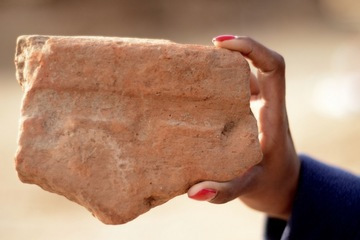
 This is a fragment of a clay basin that would have been used by the ancient Egyptians to produce beer.
This is a fragment of a clay basin that would have been used by the ancient Egyptians to produce beer.
Credit: Yoli Shwartz, courtesy of the Israel Antiquities Authority View full size image
Tel Aviv's reputation as a party city for expats might have started 5,000 years ago.
During the Bronze Age, Egyptians were making beer in what is today downtown Tel Aviv, new archaeological evidence suggests.
When archaeologists were conducting salvage excavations ahead of construction on new office buildings along Hamasger Street, they found 17 ancient pits that were used to store produce, according to an announcement from the Israel Antiquities Authority (IAA).
buildings along Hamasger Street, they found 17 ancient pits that were used to store produce, according to an announcement from the Israel Antiquities Authority (IAA).
These pits held Egyptian-style pottery that dated back to the Early Bronze Age I, a period that lasted from 3500 B.C. to 3000 B.C. [In Photos: Early Bronze Age Chariot Burial]
"On the basis of previously conducted excavations in the region, we knew there is an Early Bronze Age site here, but this excavation is the first evidence we have of an Egyptian occupation in the center of Tel Aviv at that time," Diego Barkan, an archaeologist who was conducting the excavation on behalf of the IAA, said in the statement.
here, but this excavation is the first evidence we have of an Egyptian occupation in the center of Tel Aviv at that time," Diego Barkan, an archaeologist who was conducting the excavation on behalf of the IAA, said in the statement.
 [image error]
[image error]
 A corroded, 6,000-year-old bronze dagger was also found during the urban excavation.
A corroded, 6,000-year-old bronze dagger was also found during the urban excavation.
Credit: Yoli Shwartz, courtesy of the Israel Antiquities AuthorityView full size imageBarkan and his colleagues found hundreds of pottery fragments, including broken pieces of large ceramic basins traditionally used to prepare beer — a staple of the Egyptian diet.
found hundreds of pottery fragments, including broken pieces of large ceramic basins traditionally used to prepare beer — a staple of the Egyptian diet.
The clay that was used to create these basins had been mixed with straw or other organic materials as strengthening agents. This method wasn't used in the local pottery industry in Israel, but straw-tempered vessels have been found before at other Egyptian sites — notably, the Egyptian administrative building that was excavated at En Besor in southern Israel, Barkan explained.
— notably, the Egyptian administrative building that was excavated at En Besor in southern Israel, Barkan explained.
"This is also the northernmost evidence we have of an Egyptian presence in the Early Bronze Age I," Barkan said. "Until now, we were only aware of an Egyptian presence in the northern Negev and southern coastal plain, whereby the northernmost point of Egyptian occupation occurred in Azor. Now we know that they also appreciated what the Tel Aviv region had to offer and that they too knew how to enjoy a glass of beer, just as Tel Avivians do today."
The archaeologists report that they also found 5,000-year-old bones from wild boar, sheep and goat at the site, as well as a bronze dagger and stone tools dating back 6,000 years, during the Chalcolithic period.
Live Science

 This is a fragment of a clay basin that would have been used by the ancient Egyptians to produce beer.
This is a fragment of a clay basin that would have been used by the ancient Egyptians to produce beer. Credit: Yoli Shwartz, courtesy of the Israel Antiquities Authority View full size image
Tel Aviv's reputation as a party city for expats might have started 5,000 years ago.
During the Bronze Age, Egyptians were making beer in what is today downtown Tel Aviv, new archaeological evidence suggests.
When archaeologists were conducting salvage excavations ahead of construction on new office
 buildings along Hamasger Street, they found 17 ancient pits that were used to store produce, according to an announcement from the Israel Antiquities Authority (IAA).
buildings along Hamasger Street, they found 17 ancient pits that were used to store produce, according to an announcement from the Israel Antiquities Authority (IAA). These pits held Egyptian-style pottery that dated back to the Early Bronze Age I, a period that lasted from 3500 B.C. to 3000 B.C. [In Photos: Early Bronze Age Chariot Burial]
"On the basis of previously conducted excavations in the region, we knew there is an Early Bronze Age site
 here, but this excavation is the first evidence we have of an Egyptian occupation in the center of Tel Aviv at that time," Diego Barkan, an archaeologist who was conducting the excavation on behalf of the IAA, said in the statement.
here, but this excavation is the first evidence we have of an Egyptian occupation in the center of Tel Aviv at that time," Diego Barkan, an archaeologist who was conducting the excavation on behalf of the IAA, said in the statement. [image error]
[image error]
 A corroded, 6,000-year-old bronze dagger was also found during the urban excavation.
A corroded, 6,000-year-old bronze dagger was also found during the urban excavation.Credit: Yoli Shwartz, courtesy of the Israel Antiquities AuthorityView full size imageBarkan and his colleagues
 found hundreds of pottery fragments, including broken pieces of large ceramic basins traditionally used to prepare beer — a staple of the Egyptian diet.
found hundreds of pottery fragments, including broken pieces of large ceramic basins traditionally used to prepare beer — a staple of the Egyptian diet.The clay that was used to create these basins had been mixed with straw or other organic materials as strengthening agents. This method wasn't used in the local pottery industry in Israel, but straw-tempered vessels have been found before at other Egyptian sites
 — notably, the Egyptian administrative building that was excavated at En Besor in southern Israel, Barkan explained.
— notably, the Egyptian administrative building that was excavated at En Besor in southern Israel, Barkan explained."This is also the northernmost evidence we have of an Egyptian presence in the Early Bronze Age I," Barkan said. "Until now, we were only aware of an Egyptian presence in the northern Negev and southern coastal plain, whereby the northernmost point of Egyptian occupation occurred in Azor. Now we know that they also appreciated what the Tel Aviv region had to offer and that they too knew how to enjoy a glass of beer, just as Tel Avivians do today."
The archaeologists report that they also found 5,000-year-old bones from wild boar, sheep and goat at the site, as well as a bronze dagger and stone tools dating back 6,000 years, during the Chalcolithic period.
Published on March 31, 2015 07:40
History Trivia - Bernard of Clairvaux urges the necessity of a Second Crusade.
March 31
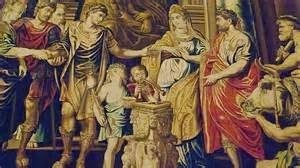
307 after divorcing his wife Minervina, Constantine married Fausta, the daughter of the retired Roman Emperor Maximian, but murdered her in 326.

1146 Bernard of Clairvaux preached his famous sermon in a field at Vézelay, urging the necessity of a Second Crusade.
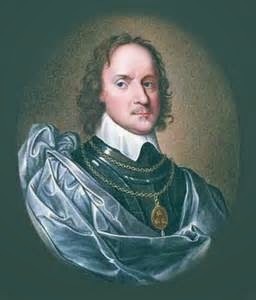
1657 Parliament offered Oliver Cromwell the title of king in the Humble Petition and Advice, but he rejected the title.

307 after divorcing his wife Minervina, Constantine married Fausta, the daughter of the retired Roman Emperor Maximian, but murdered her in 326.

1146 Bernard of Clairvaux preached his famous sermon in a field at Vézelay, urging the necessity of a Second Crusade.

1657 Parliament offered Oliver Cromwell the title of king in the Humble Petition and Advice, but he rejected the title.
Published on March 31, 2015 01:30
March 30, 2015
History Trivia - Henry VIII divorces his first wife, Catherine of Aragon
March 30

1191 Celestine III elected Pope. During his pontificate, he confirmed the order of Teutonic Knights.
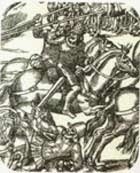
1603 The Nine Years' War between England and Irish rebel Hugh O'Neill ended with the surrender of the Irish.

1533 Henry VIII divorced his first wife, Catherine of Aragon.

1191 Celestine III elected Pope. During his pontificate, he confirmed the order of Teutonic Knights.

1603 The Nine Years' War between England and Irish rebel Hugh O'Neill ended with the surrender of the Irish.

1533 Henry VIII divorced his first wife, Catherine of Aragon.
Published on March 30, 2015 01:30
March 29, 2015
Mr. Chuckles checks out an American In Britain, Barb Taub, while stirring the Wizard's Cauldron

The Wizard says:
Today, in the ominous, awe inspiring shadow of the Burj Khalifa, here in downtown Dubai, I meet Barb Taub. YA writer, reviewer, commentator and classic American wit in the Mary Tyler Moore mould.
Barb now lives and writes in the Green and Pleasant. I met her through the brilliant Rosie Amber’s review site, where she reviewed my novel The Night Porter. Whatever grade Barb gave TNP was less important than the stunning quality of the review itself, like a newspaper article, and I swiftly sent the Goblins out to research her.I discovered she’s a writer (as you will see of Mature YA novels) and very popular in this little corner of our vast and sprawling Indie world. I also discovered she’s a superhero buff, which etches her name in indelible ink in my personal cool book. Picking up the Wizphone, I tracked her down as she walked the dogs on a freezing spring day somewhere up North. Here’s what she had to say. Read more
Published on March 29, 2015 06:55



